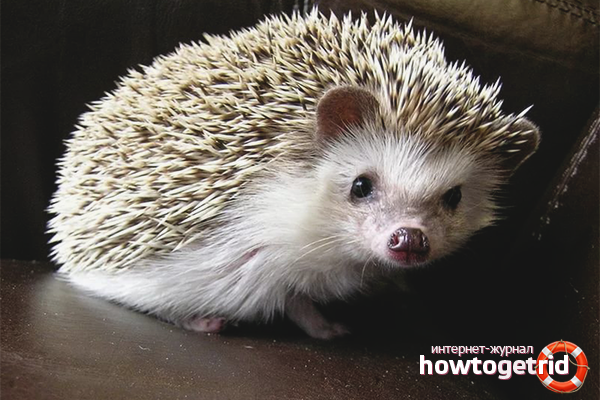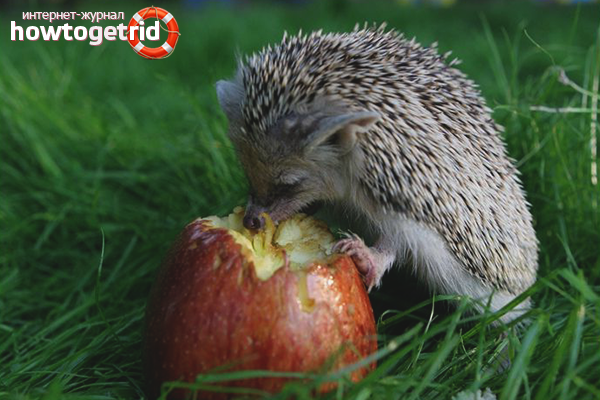Sections of the site
Editor's Choice:
- How to feed a hedgehog at home?
- How to make a poster with chocolates and inscriptions with your own hands?
- DIY hazel onions
- What you need for a picnic
- Pike head ear
- Rating of winter lures for perch
- How to salt pike caviar
- How to make cheese at home - recipe
- How to care for a hedgehog at home
- How to make a hunting bow with your own hands?
Advertising
| How to care for a hedgehog at home |
|
The hedgehog is an omnivorous mammal that belongs to the hedgehog family. The natural habitat of these animals are forests, meadows, river floodplains, plains. In Eurasia, hedgehogs are widespread almost everywhere, but in some regions they are listed in the Red Book as an endangered species. Living in natural conditionsThe breeder must understand that the main thing in caring for a pet is to recreate the conditions of its natural habitat as much as possible. How do hedgehogs live in the wild? Nutrition In conditions of prolonged starvation, hedgehogs are able to eat earthworms and even snakes, including poisonous ones. However, such a diet will not be beneficial for the animal. Lifestyle Hedgehogs mate in the spring after hibernation. In a litter, a female can have up to 8 cubs, pregnancy lasts 40-49 days. The life expectancy in the wild rarely exceeds 5 years. How to choose a hedgehogIs it worth buying an animal at a pet store or it is better to contact the breeder - a moot point. On the one hand, the store is an officially existing organization that is responsible and provides guarantees. However, the seller is usually very superficial with each type of animal. The breeder knows everything about hedgehogs and can tell all the nuances of caring for an animal, the pedigree of a particular pet and its preferences. It is worth considering that the risk of buying an unhealthy animal is about the same in both cases.Before buying a hedgehog, you should carefully examine it. The animal should be mobile, its skin and needles should look healthy, and there should be no crusts or mucus on its eyes. The first manifestation of many diseases in hedgehogs is excessive loss of needles and sour eyes. The wisest decision is to consult with your veterinarian before purchasing. Hedgehogs get used to the area in which they live quite strongly. When a pet is bought and transported to a new location, he experiences stress. This is due to the fact that hedgehogs have poor eyesight, but excellent sense of smell and hearing. In a new home with unfamiliar smells, the animal will feel in constant danger until it gets used to its surroundings. How to facilitate the adaptation process? There are some simple tricks:
Cell selectionHedgehogs are very mobile animals, they like to run, therefore the cage must be large enough. It is important that it closes securely, as these pets are real escapees. You cannot choose two-tier cells. Pets have poor eyesight, and it is difficult for them to climb to the second floor. In addition, the bones of hedgehogs are fragile, climbing and entangling in the rods, the pet can damage the paw. There must be a litter in the cage, it should be made of natural materials: wood sawdust or grass. Hedgehogs love to hide, they definitely need a mink. A small but closed house can replace it at home. Another required component is a running wheel, otherwise the hedgehog will suffer from physical inactivity. You can try litter box training. To do this, fill it with materials other than bedding. Ordinary cat litter is suitable for these purposes. However, it must be borne in mind that hedgehogs do not lend themselves well to such training and relieve themselves wherever they want. NutritionThe most common disease in captive hedgehogs is obesity. It becomes the cause of their premature death, therefore, it is worthwhile to balance the pet's diet as much as possible.
You can buy special food for hedgehogs at pet stores. If it is absent, dry food for cats is suitable, the taste preferences of animals are very similar. In addition, the hedgehog should be fed with meat, fish, eggs and fruits. Low-fat boiled chicken or fish, boiled eggs, non-acidic apples, ready-made peas are suitable as complementary foods. Food must not be salted during cooking, and raw meat must not be given. There are a number of products that are forbidden to feed hedgehogs, these include: tomatoes, grapes, raisins, milk, avocado, alcohol, sweets, bread. The pet feeder should be low and wide enough for the hedgehog to climb inside. This will make it easier for him to eat. At the same time, it must be heavy so that the pet cannot turn it over. A few basic rules
With proper care, the lifespan of a hedgehog in captivity can reach 12 years. It is worth adhering to the basic rules, and the pet will delight you with its presence for a long time. Video: how to care for hedgehogs |
| Read: |
|---|
New
- Analysis of the "Old Woman Izergil" Bitter Test of the work
- Analysis "Old woman Izergil" Gorky The meaning of a mother's life
- Nikolai Vasilyevich Gogol
- "The fate of man" main characters
- Who is the main character of the novel M
- The purpose of their arrival (based on the comedy "Woe from Wit" A
- Vincent van gogh paintings What style did van gogh work in?
- Alexander Green, short biography Post about Green's life
- The most interesting facts from the life of Van Gogh Biography of Van Gogh and his paintings
- Masha Mironova - the true love of Peter Grinev and the moral ideal of the writer








